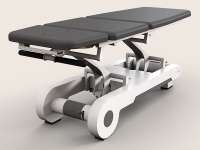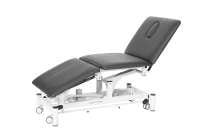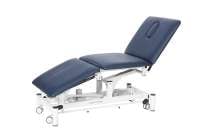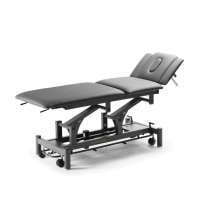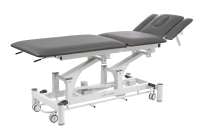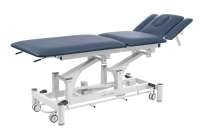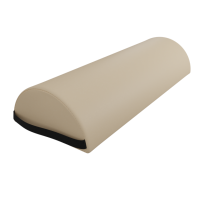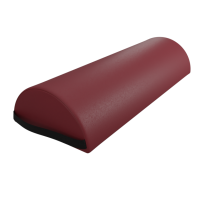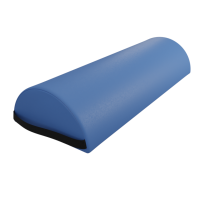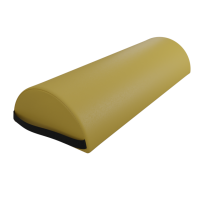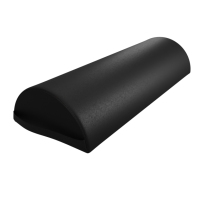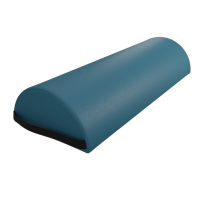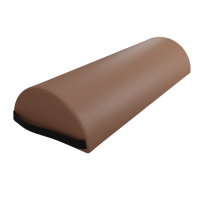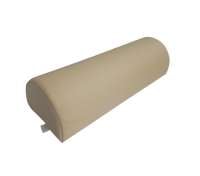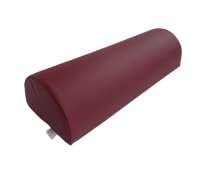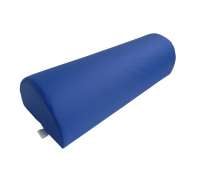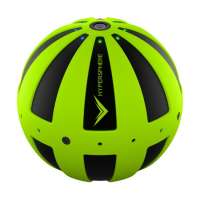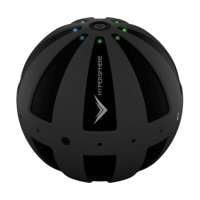
The future of physiotherapy looks bright: according to a study by Allied Market Research, the market will grow to $11.2 billion by 2027, due in part to the increasing prevalence of chronic diseases and injuries. However, not only is the size of the market changing, but also the interest in new concepts.
What does this mean for physiotherapists?
The majority of physiotherapy practices worldwide now use digital health technologies to facilitate diagnosis and treatment. We have already covered this topic in our last blog article.
However, the methods of therapy are also constantly evolving and those who want to stay "up to date" must continue to educate themselves. Only then can you meet the growing interest in new concepts and differentiate your offering from the competition.
Fill Up Your Toolbox
Imagine your work is a toolbox filled with various tools that you can use to improve or restore the health of your patients. Each pain and each illness requires something different.
Your goal: To equip your toolbox with as much diversity as possible to be able to meet any problem.
Conventional therapy is often not enough and so it is common for many practices to combine various treatment methods. Yoga and Pilates are particularly popular.

Yoga and Pilates Liven Up the Training Plan
Physiotherapy mainly aims at the rehabilitation of injuries or ailments - Yoga and Pilates offer additional opportunities to move and stretch the body in new ways. The different exercises improve posture, flexibility, strength and endurance, helping to avoid injuries.
As millions of people worldwide already practice yoga and Pilates privately, the exercises can be easily integrated into everyday life and provide a welcome change from conventional methods.

In this blog article, we answer the following questions:
1. What is yoga? What is Pilates?
1.1 The health benefits
1.2 Will yoga and Pilates replace physiotherapy?
2. Where can yoga and Pilates be applied?
2.1 Exercises for back pain
2.2 Exercises for rheumatism
2.3 Exercises after a stroke
2.4 When should yoga and pilates be avoided?
3. How can I further educate myself as a physiotherapist?
4. How can I integrate yoga and Pilates into my practice?
5. Summary of the topic
1. What is Yoga? What is Pilates?
Yoga and Pilates are training forms that serve to bring body and mind into harmony and promote health. Both systems emphasize the connection of breathing, movement and mind.
Yoga consists of a combination of breathing exercises, improved body posture and meditation, while Pilates focuses on targeted strengthening and stretching exercises that are intended to strengthen the core of the body. Both training forms offer a variety of health benefits and can be practiced by people of all ages and fitness levels.
1.1 The Health Benefits
Those who regularly practice yoga or pilates can enjoy a wide range of physical benefits. Both training forms have some things in common:
- they increase flexibility
- they improve balance
- they reduce stress
- they increase well-being
However, there are also some differences, as yoga and pilates focus on different aspects of physical fitness.
Yoga focuses on stretching and relaxing the muscles. There is also a lot of emphasis on breathing techniques. Pilates, on the other hand, emphasizes strengthening the core muscles and stabilizing the spine. Pilates exercises also improve body awareness.
You might be thinking, "This all sounds very promising, it covers just about everything." Understandably, the following question arises:
1.2 Will Yoga and Pilates Replace Physiotherapy?
Short and clear: No. Yoga and pilates should be seen as a complement to physiotherapy, not a replacement. Physiotherapists will continue to be in demand. However, it cannot be denied that both forms of exercise can be crucial in supporting therapy.
To give you a clearer picture, we will now discuss when yoga and pilates are useful and which specific exercises can be helpful.
2. Where Can Yoga and Pilates Be Applied?
Several factors should be considered before recommending Yoga or Pilates to your patients. These include:
- Type of injury or illness: Yoga and pilates can be effective for certain injuries or illnesses, such as back pain, stress, sleep disorders, and arthritis.
- Patient's fitness level: Yoga and pilates require a certain level of physical fitness and flexibility. Therefore, the patient's current fitness level should be taken into account.
- Patient's preferences: Some people feel more comfortable with yoga or pilates than with other exercises. It is important to consider the patient's preferences to ensure a successful therapy.
- Patient's goals: The yoga and pilates exercises can have different goals, such as stress reduction, muscle building, increased flexibility, or pain relief.
2.1 Exercises for Back Pain
According to the WHO, about 60 to 70% of all people worldwide suffer from back pain at least once in their lifetime. No wonder this ailment is the second most common cause of work disability, and many people seek the help of a physiotherapist.
Both Yoga and Pilates can help relieve back pain. Yoga improves the flexibility and endurance of your patients' muscles. Pilates, on the other hand, strengthens the deep abdominal muscles, which can support and relieve the spine.
Here are some examples of exercises that you can recommend to your patients:
Yoga Exercises for Back Pain
- Cat-Cow: This exercise stretches the spine and releases tension in the lower back.
- Cobra: This yoga exercise strengthens the back and abdominal muscles and stretches the chest.
- Child's Pose: Here, the muscles of the lower back, hips, and thighs are stretched.
Pilates Exercises for Back Pain
- Bridging: This exercise can help patients strengthen the lower back, as well as the abdominal muscles and thighs.
- Pelvic Tilt: This exercise stabilizes the abdominal muscles and lower back.
- Swimming: This dry exercise strengthens the muscles in the upper and lower back, buttocks, and thighs.
2.2 Exercises for Rheumatism
Rheumatism is a group of more than 100 different diseases that can affect connective tissue, joints, and muscle tissue. Typical symptoms of rheumatism can include pain, inflammation, stiffness, and swelling of the joints. Rheumatism can be triggered by various factors, such as:
- genetic predisposition
- autoimmune diseases
- injuries
There is no cure for rheumatism, but there are various treatment options, such as medication, physiotherapy, and dietary changes, to alleviate the symptoms and improve the quality of life of those affected.
Yoga and pilates can be used supportively to improve mobility, flexibility, and muscle strength, as well as to promote relaxation and stress reduction.
Yoga Exercises for Rheumatism
Choose exercises that focus on slow breathing, gentle movements, and static postures. These include:
- Warrior I and II
- Tree Pose
- Downward Dog
- Cat-Cow
Pilates Exercises for Rheumatism
To alleviate rheumatic symptoms, exercises that improve posture through gentle stretches and strengthening exercises are suitable. Examples include:
- Bridge
- Leg and arm changes in the quadruped position
- Side plank
2.3 Exercises After a Stroke
After a stroke, it is important for the affected person to undergo rehabilitation in order to restore mobility and coordination. Mobility and muscle strength can be increased with special exercises.
Note: It is important that the training is tailored to the individual's needs and abilities.
Yoga Exercises After a Stroke
For rehabilitation, the following exercises can help, depending on the need and abilities:
- Breathing exercises and pranayama exercises: increase oxygen levels in the blood to promote relaxation.
- Chest stretch: yoga exercises that stretch the chest can increase flexibility and improve breathing.
- Cat cow: exercise can also help here. It mobilizes the spine and strengthens the back muscles.
Pilates Exercises After a Stroke
Depending on the patient, the following exercises can help:
- Sit-ups: They help strengthen the abdominal muscles and improve posture.
- Leg raises: This exercise stabilizes the thigh muscles and improves balance
- Pelvic clock: The pelvic muscles are activated, balance is improved and body awareness is trained
2.4 When Should Yoga and Pilates Be Discouraged?
There's no question about it: Yoga and pilates are great ways to add variety to the treatment routine and are easy to do at home. However, these training methods are not always advisable. In certain cases, the exercises can even be harmful.
Yoga and Pilates are not suitable if:
- the patient is suffering from an acute injury or inflammation
- the patient suffers from serious health problems, e.g. osteoporosis, unstable spine, cardiovascular disease
3. How Can I Further My Education as a Physiotherapist?
Do you feel like learning more about yoga and pilates? There are several ways to do independent research and continue your education.
- Take part in special training or courses. Here you can learn new exercises and techniques as well as deepen and broaden your knowledge.
- Another option is to educate yourself independently with specialized literature and online courses. There are numerous books, e-books, videos, and online courses designed specifically for physical therapists to help you improve your yoga and Pilates skills.
- Exchange ideas: Experienced colleagues can share knowledge and experiences. It is also possible to receive supervision from an experienced physical therapist or yoga and Pilates teacher.
4. How Do I Integrate Yoga and Pilates Into My Practice?
Do you want to expand your services and combine Yoga or Pilates with physiotherapy in the future? We think that's a great idea! But in order for you to succeed, you need thorough planning and a well-thought-out concept.
Be sure to consider the following points:
- Space: Consider whether you have enough space in your practice to offer a yoga or Pilates class and whether you can provide the necessary equipment, such as mats and balls.
- Integration: consider how you can integrate yoga and Pilates into your existing physical therapy practice. For example, you could offer a regular class or offer yoga and Pilates as an adjunct to treatments.
- Communication: make sure you communicate with your patients what yoga and Pilates are, how you can help, and what to expect from the exercises.
- It is important that your patients are well informed and know the benefits of yoga and Pilates. This will make it easier for them to integrate the exercises into their daily lives and thus work with the concept in the long term.
5. Summarizing the Topic

Physical therapy is a growing market and demand continues to increase. Nevertheless, physiotherapists cannot avoid restructuring their services. Patients today want varied and holistic approaches to therapy that are not only effective, but equally fun.
Both yoga and Pilates are already part of many people's private exercise plans, but they also complement conventional physical therapy by:
- increase flexibility
- reduce stress
- strengthening the core muscles
- and improving breathing techniques
Once you have become educated in the appropriate topic, you can add individual exercises to your patients' individual therapy plans or even offer classes in your practice.
Important for the implementation is:
- to educate yourself comprehensively
- to respond individually to the needs of the patients
- explain to the patients how the exercises work
- encourage patients to integrate the exercises into their daily routine.
And with that, nothing should stand in the way of your success.
We hope that you were able to take away some ideas and we end the topic at this point with the following quote:
"Nothing is as constant as change." - Heraclitus

Imagine how masterful you would be in something if you've been practicing it daily since 1954...
Inspired by the lack of affordable options for quality treatment tables on the market, we set out to create a brand that takes the entire experience for both therapist and client to a new level. We carefully combine selected materials and masterful craftsmanship to offer you the best of both worlds.
But it's not just about creating the perfect treatment table for us. It's also about giving our customers a piece of peace of mind. That's why all our own brand tables, "Massunda" and "Zen Massage Ware," are durable and come with a 10-year warranty*, providing years of enjoyment.
Our offering for physiotherapists in the new age of physiotherapy
At the Massage Tables House, we may not offer you artificial intelligence yet, but when it comes to top-quality practice essentials, we have everything you need - from treatment tables to hygiene items. Come visit us and let us convince you with our offerings!
How did you like the article?
With your feedback, we can improve our content.
❤️ Very interesting! - ☺️ Okay. - ☹️ Not interesting.


